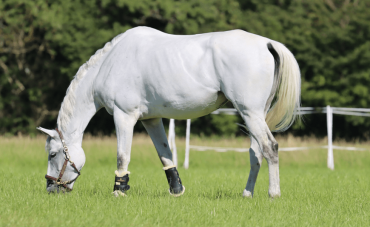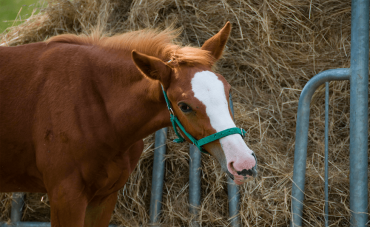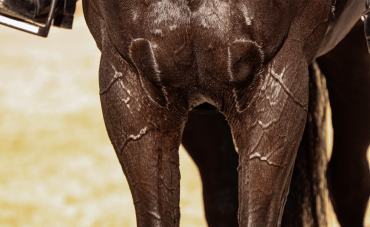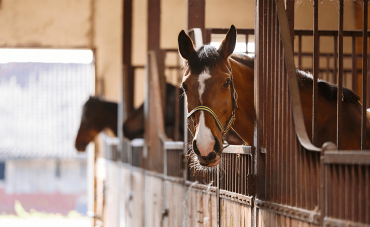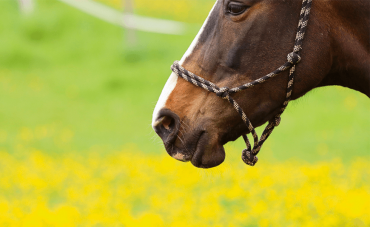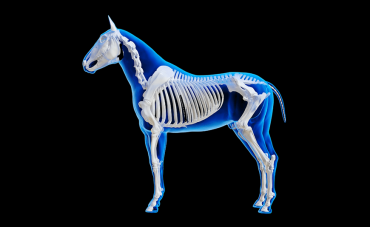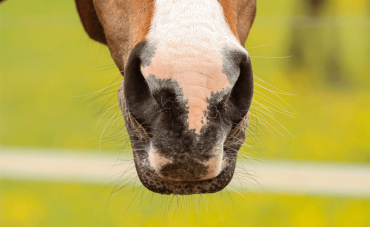What is lymphangitis?
To understand what lymphangitis is, we must take a look at the system it affects within the horse's body: the lymphatic system.
Focus on the lymphatic system
The lymphatic system includes both the lymphatic network and the lymphatic organs. It has multiple functions but the following are the two main ones:
- The circulation of immune cells throughout the body and thus the activation of the immune response in the event of an infection.
- The circulation of hormones and nutrients and the drainage of excess fluid from the tissues.
When mentioning the lymphatic network, we refer both to the lymphatic vessels in the body through which the lymph circulates and, to the lymph nodes, which are spread throughout the body and allow the lymph to be cleaned. Unlike in blood circulation, there isn’t a pump allowing lymph circulation. In fact, it is movement, muscle contraction, and fibres of the lymphatic vessels that enable circulation. There are also lymphatic organs such as the bone marrow, the thymus and the spleen, which play a role in the development and differentiation of white blood cells.
The link between the lymphatic system and lymphangitis.
For the lymph to circulate correctly, it is important for horses to have daily physical activity. Otherwise, lymph accumulates and causes massive and rapid swelling. Lymphangitis involves inflammation, generally in the subcutaneous tissues of one or more limbs. It is a condition that can affect any horse, regardless of age, breed or lifestyle. As lymphangitis is related to inflammation, it can have significant health consequences and should be diagnosed as soon as possible to avoid long-term sequelae.
Causes of lymphangitis in horses
In most cases, lymphangitis is related to an infection. A pathogen, often a bacteria, crosses one of the body's physical barriers and end up in the subcutaneous tissue. The point of entry can be :
- A wound, sometimes small enough not to be visible at a glance (puncture...). For example, mud fever can develop into lymphangitis if left untreated.
- In horses with poor foot condition, cracks can be very deep, allowing pathogens to enter the body.
The infection caused by the pathogen will cause the inflammation which results in massive swelling on the limb. The longer the infection lasts, the more the swelling will increase.
The swelling caused by the inflammation is very painful because it creates a large area of tension in the skin and therefore a lot of pressure.
Symptoms of lymphangitis in horses
The symptoms of lymphangitis are fairly recurrent and easily recognizable.
Amongst the most common: swelling generally appears quickly and most often affects the hindleg unilaterally. The swelling can be quite important, the affected area can become 2 to 3 times bigger. It is also possible for the swelling to spread very high up on the limb above the hock or even the stifle.
As a direct result of this swelling, horses may be lame to a greater or lesser extent depending on the severity of the inflammation and the sensitivity of each horse.
Finally, horses may have high temperatures.
Depending on how quickly the condition is treated, other symptoms may appear including loss of appetite, depression, sweating, trembling, increased respiratory rate, caused by pain and/or high temperature.
Diagnosis of lymphangitis in horses
As the symptoms are easy to recognize, the diagnosis is relatively straightforward.
However, a visit to the veterinarian is essential to confirm the diagnosis. He may also consider taking a swab from the wound, to try to identify the pathogen responsible for the infection. In many cases the swab is not interpretable as there is a large flora of microorganisms in the horse's skin which can confound the results. The sample may also come back negative either because the horse's immune system has already fought it or because it is a difficult pathogen to test for.
In all cases, the vet will suggest a treatment because even if the infection is not precisely identified, the inflammation may persist.
Treatment of lymphangitis in horses
The quicker the diagnosis and treatment, the more effective it will be. The vet can combine different types of treatment depending on his diagnosis:
- Antibiotics to fight the infection. The vet decides on their use and may adapt the type of antibiotics according to his diagnosis.
- Anti-inflammatory drugs to prevent the swelling from continuing to grow bigger but also to reduce it. Treating the inflammation also limits the pain.
- Local care: Essential for the treatment to be successful, the first step is to clip the affected limb, especially in winter when the coat is thicker. Then, the vet recommends a shower and the use of antiseptic soap as well as drying the limb after the shower to limit the proliferation of pathogens.
In parallel with the treatment of the lymphangitis and if the size of the swelling allows the horse to stand on his limb, it is recommended to keep a light activity (walking) to facilitate the drainage. In the extreme case where a horse living outside is unable to move due to pain, it is best to move him back inside so that he can eat and drink without moving.
In some instances, horses have difficulties recovering that can lead to long-term sequelae or relapses. The main causes are:
- Resistance of the pathogen involved. This is why the veterinarian takes a sample whenever possible. The identification of the pathogen allows the treatment to be refined.
- Deformity of the limb. In cases where lymphangitis has not been caught in time and the inflammation has remained untreated for too long, the subcutaneous tissues become deformed and thicker resulting in a slightly different appearance of the skin.
In addition to the treatment, the use of feed supplements facilitating drainage and elimination can be useful.
All in all, equine lymphangitis, if treated in time, is a benign disease. Therefore, if you suspect your horse has symptoms of lymphangitis, contact your vet as soon as possible.

